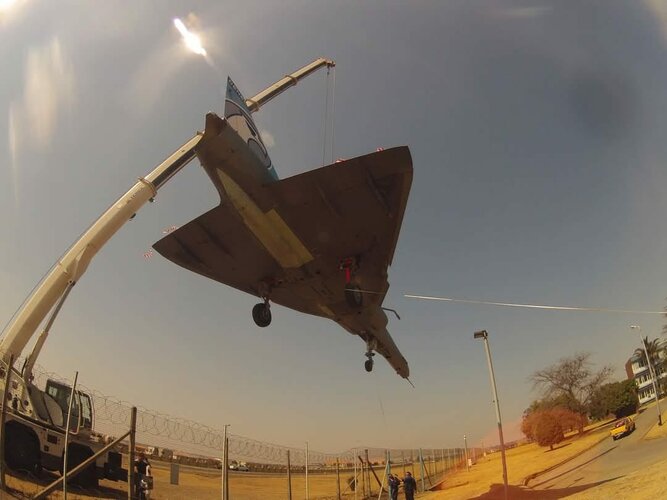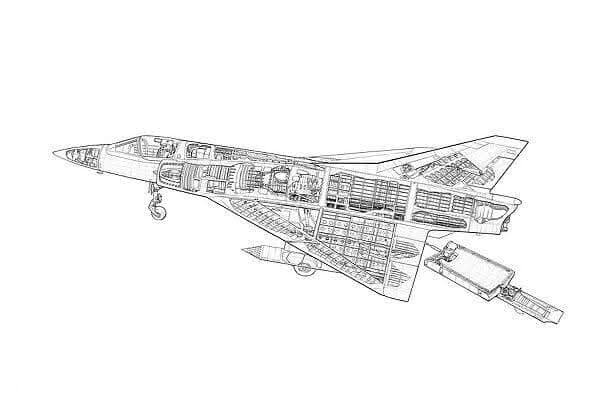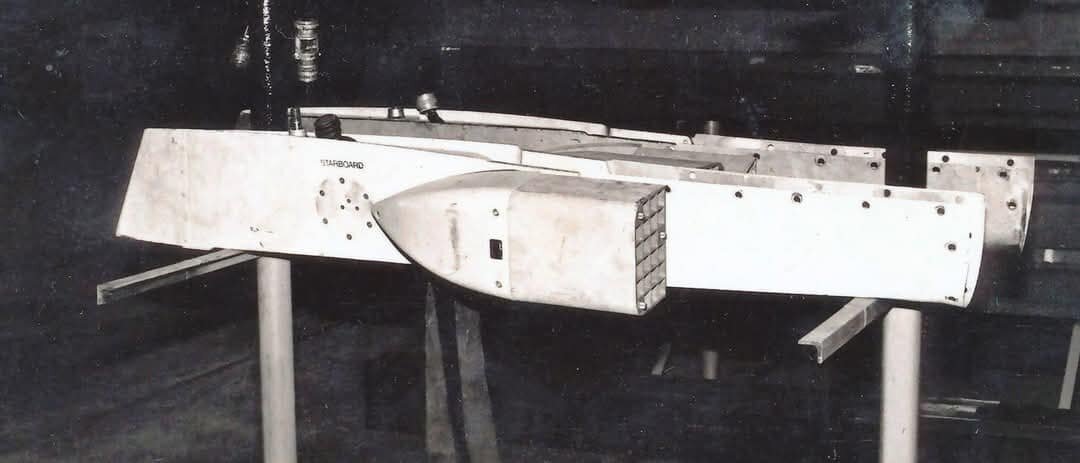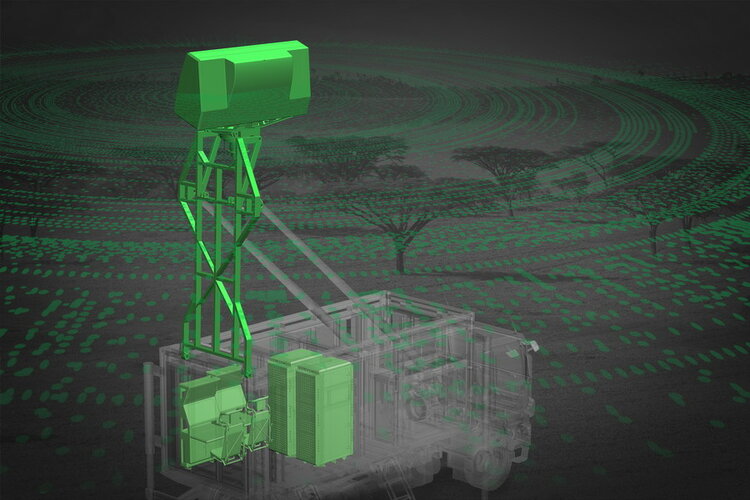This is amazing, thanks so much for sharing it. I had no idea South Africa had MAW systems during that war. If you don't mind me asking, do you have any more information on these early systems and what aircraft they were fitted to?
Hi David - I think I may finally have found some sort of answers for you - This was taken off of FB - It's by one of the guys who worked on the project for a while - I believe that his name is Kobus De Villiers:
The question about the Cheetah Chaff/Flare installation.
Martin Strümpfer asked a question about the Chaff/Flare dispenser installation on the Cheetah series of aircraft. The answer is somewhat convoluted, and I will try to explain the sequence here. I do not recall the exact dates, but this process started in 1983 and ran through to 1989/90. The Cheetah C follows on from that, but by then I was living and working in Russia on the Mig-29 engine project, so I do not have direct insight how that developed.
First, we need to discuss the SAAF Mirage III family when the Cheetah B/D/D2, E and R2 conversion started.
1 The SAAF had Mirage III CZ models. The lower aft fuel tank was attached by 4 big bolts and locating pins. This tank had a thin ventral fin at the back and was interchangeable with a tank that could carry a special fuel and was equipped with a rocket motor to aid short runway take-off and rapid climb rates. These A/C had the Atar 09B engine. They were also shorter than the Mirage III EZ.
2 The SAAF had Mirage III EZ models. The lower aft fuel tank was similar to that of the Mirage III CZ, except that it had a camera mounted in an extended fairing at the back of the tank. This was to film bombing accuracy during the pull-up after a bombing run. These A/C had the Atar 09C engines.
3 The SAAF had Mirage III BZ models. They were 2-seat trainer models for the CZ and had a lower aft tank similar to that of the CZ. These A/C had the Atar 09B engines.
4 The SAAF had Mirage III DZ models. They were 2-seat trainer models for the EZ. They had the same lower aft tank as the Mirage III EZ. They had Atar 09C engines.
5 The SAAF had Mirage III D2Z models. They were 2-seat trainer aircraft for the Mirage F1 AZ and CZ. These A/C had different avionics from the DZ but still had the Atar 09C engine, similar to the Mirage F1 AZ and CZ. The D2Z were also equipped with an arrester hook, like a carrier deck aircraft. This dictated that the lower aft fuel tank was built into the fuselage structure in order to absorb the loads imposed by the arrester hook.
6 The SAAF had the Mirage III RZ. This aircraft was based on a Mirage III EZ fuselage, so it had the Atar 09C engine and a similar lower aft fuel tank as the Mirage III EZ.
7 The SAAF had Mirage IIIR2Z models. These aircraft were similar to the Mirage III RZ, except for the Doppler radar under the nose and they had the Atar 09K50 engine. The engine was not exactly like the one in the F1, but you could convert one to the other by swapping certain parts.
The first Mirage III that was converted to a Cheetah, was 845. That was a Mirage III D2Z. During the conversion, a Chaff/Flare installation was designed with the arrester hook removed from the lower aft fuel tank. This Chaff/ Flare installation was based on the first series of EW dispensers that were developed. The Dispensers were modified units that were originally designed to fit on the side of underwing pylons. That meant that they were an awkward shape and therefore not a large number of cartridges could be carried if installed in the wing or fuselage.
The SAAF also wanted a Chaff/Flare system which could carry more cartridges that could fit all of the Cheetah variants, to improve interchangeability throughout the fleet. The initial one on #845 was not interchangeable.
I proposed a different design of Chaff/Flare cartridge holder/dispenser when we did the Cheetah R design. We could fit almost double the number of cartridges in the same volume at the back of the aft lower tank, compared to the Cheetah 845 design.
While the Cheetah R prototype was being built, I was asked to look at the Mirage F1 AZ/CZ ventral fins that were cracking. We found that it was due to sonic fatigue because of engine exhaust outlet sound frequencies harmonizing. We proposed a new, slightly thicker fin that could also carry the proposed Cheetah R Chaff/Flair cartridges. This was turned down, on the advice of the EW design team.
The EW design team were all electronic engineers combined with SAAF pilots & navigators. The EW system was also very secret, so by the time that aerodynamicists and structural engineers got involved, the system was very difficult to fit where they wanted it mounted on the aircraft. The system also needed a large amount of electricity and cooling, while the limitations on cable and waveguide lengths were mostly not realistic.
However, we designed the Chaff/Flare installation on the Impala Mk II, using the modified pylon mounted dispenser. It was not elegant, and I was not happy cutting holes in the lower skin of an aircraft wing. We eventually found a lower stress area near the wheel well and fitted the dispensers. It worked well, but there was not enough space for a sufficient number of cartridges. We only managed this installation due to the fact that the Impala had a thick, subsonic wing. This installation would not be feasible on thin supersonic wings. The powers to be did not like my out-of-the-box thinking and gave the contract for the Chaff/Flare installation on the F1 AZ/CZ to another group. We predicted the speed loss due to their design, but it was ignored. The flight speed loss tests for this design turned out to be worse than we predicted.
There were many meetings, finger pointing and time lost. I was concerned that our Mirage IIIs and F1s were flying without available self defense mechanisms. We worked on our ventral fin dispenser idea on our own time using my cookie & tea budget
. A senior SAAF officer spoke to me offline and soon there was an announcement that the SAAF was interested in a new ventral fin with built-in Chaff/Flare dispensers. The prototype flew soon afterwards, and it worked very well with no measurable drag change. The EW guys had to redesign their Chaff/Flare dispensers, and these were then used on a prototype installation on the Cheetah R. I left Atlas soon after this and went to work with the group in Pretoria. Based on the history of this saga, we received the contract to design the Chaff/Flare dispenser installation that would use the new design of the dispensers, and it had to fit on all the various lower aft fuel tanks.
Due to this interchangeability of the aft tank (except for the Cheetah D2 with the integral tank) you can see photos of the same Cheetah with different Chaff/Flare installations. The Cheetah D2 used exactly the same design, but it was attached to the integral lower aft fuel tank. The SAAF could fly the Cheetahs with the ‘old’ dispensers while the ‘new’ design ones were being manufactured and fitted to spare tanks. The tanks could then be exchanged, since the wiring to the dispensers was kept the same.
As far as I can recall, the Cheetah C used the same dispensers, but with a few extra rows of the same cartridges.
The attached photos should help to explain.























